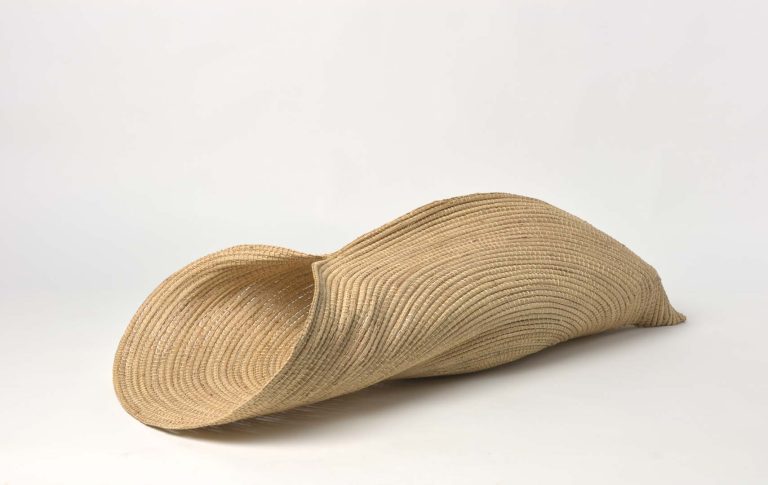We acknowledge the Traditional Owners of the land on which the Queensland Art Gallery | Gallery of Modern Art stands and recognise the creative contribution First Australians make to the art and culture of this country.

Yvonne Koolmatrie / Ngarrindjeri people / Australia b.1944 / Burial basket 2018 / Coil-woven sedge rushes / 29 x 55 x 118 cm / Purchased 2019 with funds from Cathryn Mittelheuser AM through the QAGOMA Foundation / Collection: QAGOMA / © Yvonne Koolmatrie
Yvonne KoolmatrieBurial basket 2018
Not Currently on Display
Burial basket 2018 reflects those used in Ngarrindjeri customary funerary rites, during which the body of the deceased was treated to allow the spirit to return to the land by wrapping the remains in a burial basket and placing them high in the branches of trees. Although the traditional practices are no longer observed, funeral rites and burial grounds remain undeniably significant for Ngarrindjeri people.
Yvonne Koolmatrie uses the coil bundle technique, taught to her as a young woman, to weave the spiny-headed sedge rushes of the River Murray and the Coorong. Her processes remain deeply-rooted in her Ngarrindjeri heritage, though as her practice developed she refined her distinctive technique of tight stitching to construct the perfect forms of craftsmanship and design with which she is now identified. While some works retain a functional aspect, their purely visual and aesthetic appeal predominates.
For three decades Yvonne Koolmatrie has been at the forefront of a dynamic movement of Indigenous Australian women interpreting their world in three dimensional sculptures. She was selected as one of three Indigenous artists to represent Australia in the 1997 Venice Biennale, showing a group of her elegant woven eel traps, which were reportedly sensational in the context of their water-side location.
When speaking of her practice, Koolmatrie often returns to the beginning when: “At a workshop in 1982 with Aunty Dorothy Katinyeri, I was introduced to the traditional methods of weaving sedge rushes (‘Lepidosperma conescens’). This type of sedge grows along the Coorong and Murray River in Ngarrindjeri country and so weaving is linked to the river and its health. When the river suffers the sedge grass is harder to find, when it flourishes, so do the rushes. The river, the Coorong, the sea and the lake are the four waters of the Ngarrindjeri and all are connected. Weaving is vital to Ngarrindjeri culture, it sustains us.”
From the beginning Koolmatrie has remained dedicated to revitalising the art form and also works to sustain Ngarrindjeri language and culture. She has led innumerable workshops and classes to share her knowledge and skills and is especially pleased that her son has taken up weaving and is excelling at the art. Most recently her weaving contributed significantly to Jonathan Jones’ work untitled (giran) 2018 in ‘The 9th Asia Pacific Triennial of Contemporary Art’. Jones acknowledges her as an important mentor, having first sought her out for weaving instruction at the age of 16.